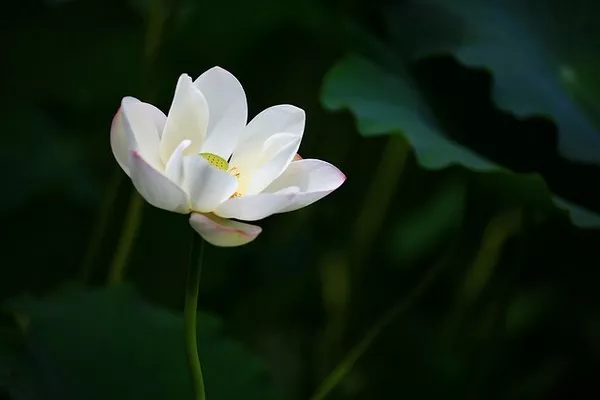The lotus plant, known for its serene beauty and spiritual significance, has intrigued botanists, ecologists, and enthusiasts for centuries. One of the many intriguing aspects of this aquatic perennial is its unique method of reproduction. In this article, we will delve into the fascinating world of lotus plant reproduction, exploring the various mechanisms and ecological implications of this process.
The Lotus Plant: A Botanical Marvel
The lotus plant, scientifically known as Nelumbo nucifera, is an aquatic plant that has been revered in various cultures for its beauty and symbolism. It is commonly found in regions with warm climates, including Asia, Australia, and parts of North America. The lotus plant is not only valued for its stunning appearance, with its striking pink or white flowers and large, round leaves, but it also holds cultural and religious significance in many societies.
Lotus plants are perennial and belong to the Nelumbonaceae family. They are adapted to grow in muddy or shallow waters, often taking root in ponds, lakes, and slow-moving streams. This unique habitat poses particular challenges and opportunities for their reproduction.
Reproduction in Lotus Plants: The Basics
Lotus plants can reproduce through two primary methods: sexual reproduction and asexual reproduction. Each of these methods has its own advantages and ecological implications.
Sexual Reproduction
Sexual reproduction in lotus plants typically involves the use of flowers and pollinators. These flowers are large, fragrant, and visually appealing, often serving as a source of nectar and pollen for various insects, particularly beetles. The sexual organs of the lotus flower consist of both male and female parts.
The male reproductive organ is called the stamen and includes anthers that produce pollen. The female reproductive organ, called the pistil, consists of the stigma, style, and ovary. When a lotus flower is in bloom, pollen is released from the anthers and carried by insects to the stigma. This process is known as cross-pollination.
Once pollen reaches the stigma, it travels down the style and fertilizes the ovules in the ovary. Fertilization leads to the development of seeds within the ovules. Over time, the ovules mature into seeds, and a seed pod begins to form. As the seed pod matures, it rises above the water, allowing the seeds to disperse and germinate when they fall into the water.
Asexual Reproduction
In addition to sexual reproduction, lotus plants can also reproduce asexually through a process called vegetative propagation. This method does not involve the formation of seeds but instead relies on the production of new plants from existing parts of the parent plant.
One of the most common forms of asexual reproduction in lotus plants is rhizome division. The lotus plant develops underground stems, known as rhizomes, which store energy and nutrients. These rhizomes can give rise to new shoots and leaves, effectively creating genetically identical clones of the parent plant. Rhizome division is particularly important in the spread and expansion of lotus colonies in their aquatic habitats.
Ecological Implications
The unique methods of reproduction in lotus plants have several ecological implications. Understanding these implications is crucial for the conservation and management of these fascinating aquatic plants.
Biodiversity and Ecosystem Services
Lotus plants play a vital role in supporting biodiversity in their aquatic ecosystems. Their large leaves and rhizomes provide shelter and breeding grounds for various aquatic organisms, including fish, amphibians, and invertebrates. Additionally, the lotus flowers attract pollinators, contributing to the overall health of the ecosystem. As the seeds of lotus plants disperse and germinate, they also contribute to the genetic diversity of plant populations.
Wetland Restoration
The lotus plant’s ability to reproduce asexually through rhizome division has practical applications in wetland restoration projects. By transplanting sections of lotus rhizomes to degraded or disturbed wetland areas, conservationists can help reestablish healthy lotus populations, which, in turn, contribute to improved water quality and enhanced habitat for various species.
Cultural Significance
Beyond their ecological roles, lotus plants hold significant cultural and religious value in many societies. The lotus flower, often associated with purity and enlightenment, has been featured in art, literature, and spiritual practices for centuries. Understanding the reproduction and life cycle of the lotus can provide valuable insights into the preservation of cultural and historical traditions.
Challenges and Threats
While lotus plants are resilient and adapted to their aquatic habitats, they face several challenges and threats that can impact their reproduction and overall survival. These challenges include habitat destruction, pollution, and invasive species.
Habitat Destruction
Urbanization and agricultural expansion can lead to the destruction of natural wetland habitats where lotus plants thrive. These activities reduce the availability of suitable habitats for lotus plants and disrupt their reproductive cycles. Conservation efforts are essential to protect and restore these critical ecosystems.
Pollution
Water pollution, particularly from agricultural runoff and industrial discharges, can have detrimental effects on lotus plants. Polluted water can harm the health of lotus populations, affecting their ability to reproduce successfully. Efforts to reduce pollution and maintain water quality are crucial for the survival of these plants.
Invasive Species
Invasive plant species can outcompete lotus plants for resources and space in aquatic ecosystems. This competition can disrupt lotus reproduction and lead to the decline of native lotus populations. Managing and controlling invasive species is essential for preserving lotus habitats.
Conclusion
The lotus plant’s unique methods of reproduction, including sexual and asexual strategies, contribute to its resilience and adaptability in aquatic environments. As a symbol of beauty and spirituality, the lotus holds a special place in the hearts of many cultures. Understanding the intricacies of lotus plant reproduction not only enriches our appreciation of this remarkable species but also provides insights into its ecological significance and conservation needs. Preserving the habitats of lotus plants and addressing the challenges they face are essential to ensuring their continued existence in our world’s ecosystems.


